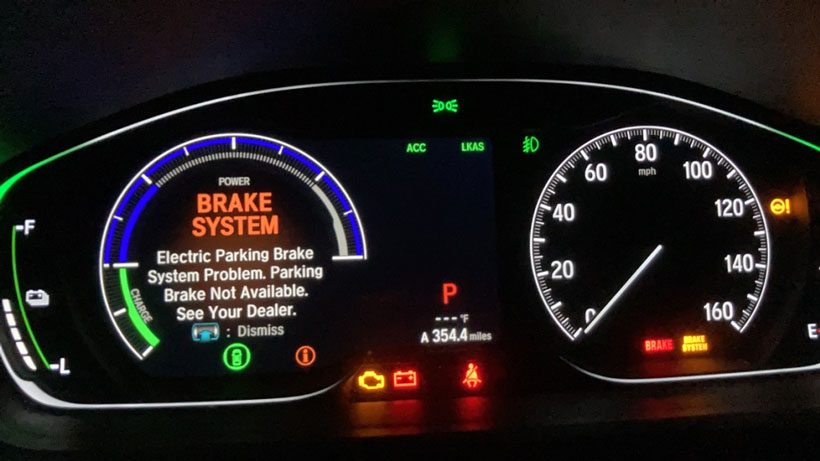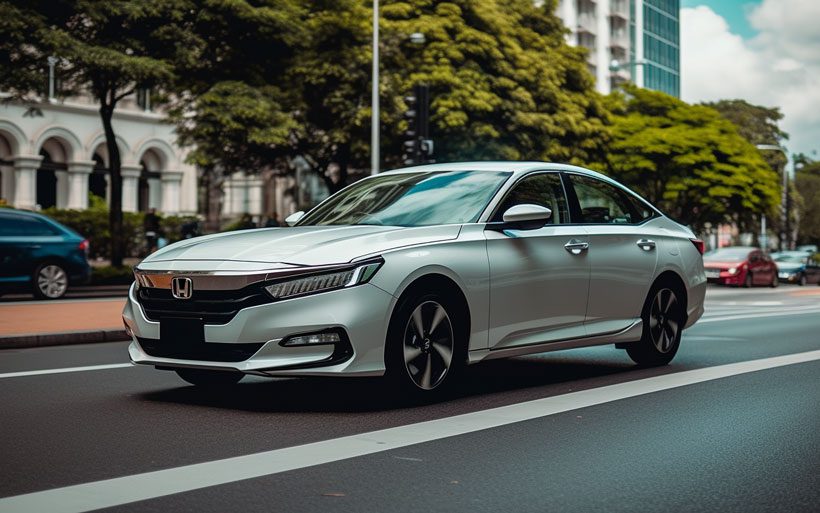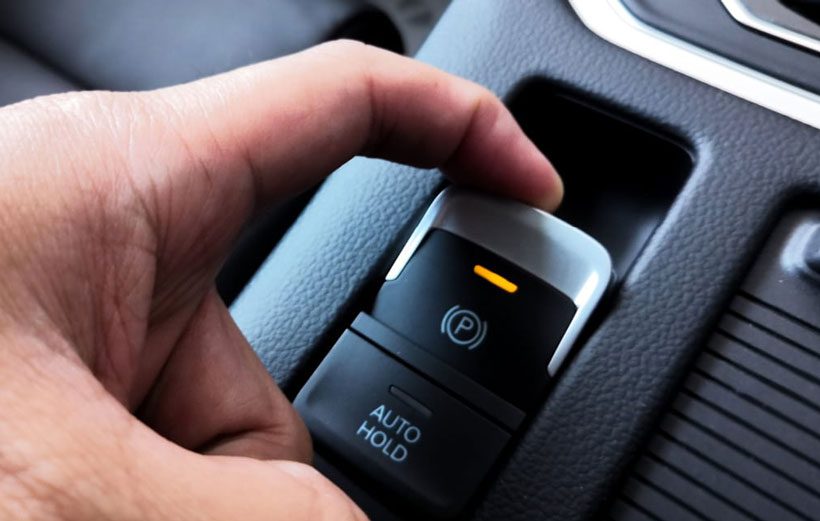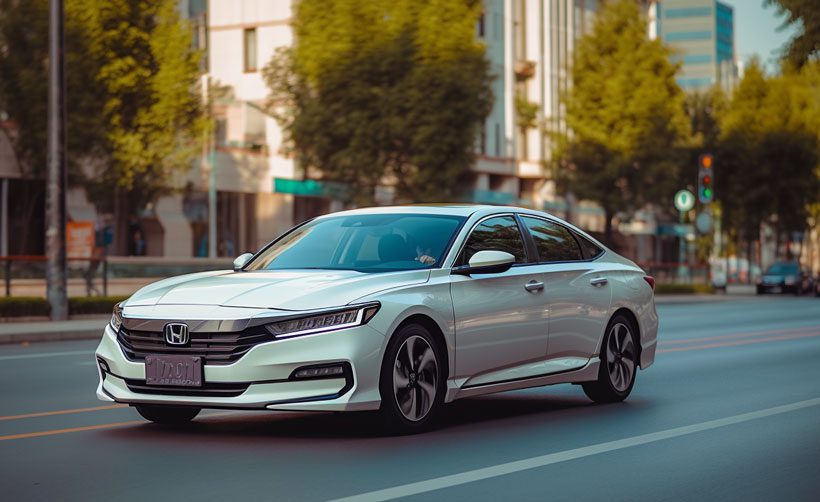The Honda Accord’s electric parking brake system is a critical component that boosts convenience and safety. Your days of stumbling around with a conventional handbrake lever are over. However, you could experience problems now and again, with the electric parking brake system.
Issues with the Honda Accord’s electric parking brake could result from the following things:
- Defective parking brake switch
- A failed power supply or battery
- Low brake fluid reservoir
- Defective servo motor
- Corroded and loose wiring
In this article, we will discuss typical issues with the Honda Accord’s electric parking brake and provide you with their solutions. Let’s begin!
How To Detect If You Have A Broken Electric Parking Brake In Your Honda Accord?
If you are wondering whether your Honda Accord’s electric parking brake system is malfunctioning, here are a few things you can look out for.
Firstly, pay attention to any unusual sounds or vibrations when engaging or disengaging the parking brake. One sign of a problem can be a screeching sound or a shaky feeling.
Next, check if the parking brake warning light on your dashboard remains illuminated even after releasing the brake. This may point to a systemic issue. Take a look at the image below to see how the parking brake warning light looks.

Image source: Driveaccord
Additionally, it’s a red flag if your car rolls or slides very slightly while the parking brake is applied. Finally, it is recommended to have your vehicle dealer inspect the parking brake if you have trouble disengaging it or if it feels unusually loose or tight.
Honda Accord Electric Parking Brake Problem: Reasons and Remedy

Now, we shall address some of the most common issues associated with the Honda Accord’s electric parking brake and offer diagnoses and solutions for each.
1. Defective Servo Motor
The servo motor is responsible for applying and releasing the parking brake. If the motor is broken, it might not produce enough power to properly engage the brake or to keep it firmly in place. As a result, the electric parking brake may not work.
Symptoms:
There is a chance that the servo motor is broken if the parking brake lever or button feels flimsy or is unresponsive when activated. In addition, a defective servo motor may cause warning lights like “Electric Parking Brake System Problem” to appear on your dashboard.
Remedy:
The broken servo motor must be changed to address this problem. You can replace a broken servo motor using the steps below:
- Step 1: First, disconnect the negative battery cable to prevent any electrical shocks or similar accidents.
- Step 2: Then you need to remove the center console covers and panels to access the motor.
- Step 3: Next, disconnect any electrical connectors connecting to the motor.
- Step 4: Now take a screwdriver and unscrew the screws to remove the defective servo motor from its housing.
- Step 5: Now you can install the replacement servo motor instead of the old one.
- Step 6: Reattach any electrical connectors and wiring harnesses.
- Step 7: Afterward re-secure the motor back in its housing and reinstall the console covers.
- Step 8: In the last step you need to reconnect the negative battery cable.
2. A Broken Parking Brake Switch
A broken brake switch can prevent the system from correctly sensing when the parking brake has been engaged or disengaged. This can result in the brake not responding when you try to use it, or failing to release after you have disengaged it.
A faulty switch can also cause issues with the warning light or message on the dashboard, leading to confusion or the inability to tell when there is a problem with the electric parking brake system.
The electric parking brake can malfunction due to a damaged brake switch, according to a 2018 Honda Accord customer.

Symptoms:
Start by locating the brake switch. It’s usually positioned near the brake pedal. Next, you should check for any evident signs of wear or damage. We are referring to issues like frayed cables, sloppy connections, or physical damage to the switch.
Remedy:
You should replace the broken parking brake switch. You may replace a broken parking brake switch by following the steps outlined below.
- Step 1: For your safety, disconnect the vehicle’s battery before doing any repairs or replacements.
- Step 2: Then, look for the parking brake switch by the side of the brake pedal.
- Step 3: Next, use a screwdriver to remove the broken switch from its mounting point. Take care not to harm any adjacent components during this process.
- Step 4: You must now use screws or clips to fasten the new parking brake switch.
- Step 5: Once the switch is securely installed, reconnect the vehicle’s battery.
3. A Dead Battery
An electronic control module that controls the electric parking brake system, needs a constant power source from the battery. If the battery is dead, the control module won’t get the power it needs, resulting in inaccurate readings and failures.
Symptoms:
Your automobile emits warning sounds to inform you of any problems with the parking brake system. If the battery is dead, it can trigger error messages on your car’s display screen. You might see messages like ‘Parking Brake Malfunction’ or ‘Check Brake System.’

Remedy:
Similar issues with the electric parking brake were reported by Honda Accord owners, who recommended changing the dead battery. We also recommend replacing the battery in this case. To change the battery you may follow these steps:
- Step 1: Turn off the ignition and remove the key from the ignition switch.
- Step 2: Then open the hood of your car and look for the battery compartment, typically located near the front of the engine bay. It is usually a square-shaped box with a red (+) and black (-) terminal.
- Step 3: Next, use a wrench to remove the bolt holding the negative terminal in place.
- Step 4: Now, carefully detach the negative cable from the termination.
- Step 5: Likewise, you must unscrew the positive terminal and remove the positive cable.
- Step 6: At this point, remove the expired battery from the battery compartment.
- Step 7: Use a battery cleaning solution and a wire brush to clean the battery terminals and the surrounding area.
- Step 9: Next, grab a brand-new battery and connect its positive and negative connections.
- Step 10: Then, you must turn the ignition key and check if the electric parking brake system is operating correctly.
4. Low Level of Brake Fluid In The Reservoir
If the brake fluid level is too low, it could potentially lead to insufficient hydraulic pressure for the EPB system to engage the parking brake correctly. This situation could result in failures of the EPB system.
Symptoms:
When the EPB is activated, there may be a delay or lack of response or the parking brake may not engage fully, resulting in insufficient holding power. Additionally, if there is a system issue, the EPB warning light on the dashboard may come on.

Remedy:
You should follow these directions to top off your car’s brake fluid if it is low.
- Step 1: Lift the hood of your car and check the brake fluid reservoir positioned near the rear of the engine compartment.
- Step 2: Carefully remove the cap from the brake fluid reservoir and inspect the fluid level. There should be a “Min” and “Max” indicator on the reservoir to guide you.
- Step 3: If you discover the fluid level is below the “Min” mark you need to refill it. You should fill the reservoir with brake fluid per the recommended brake fluid mentioned in your car’s owner’s manual.
- Step 4: Finally, to prevent leaks, tightly screw on the cap of the brake fluid reservoir.
5. Corroded And Loose Wiring
If the wiring connections associated with the EPB system become corroded or loose, it can disrupt the flow of electricity. Consequently, it leads to malfunctions or failures of the EPB. Rainwater, exposure to humidity, or inadequate maintenance can cause corrosion on the wiring or connectors.

Symptoms:
There are several indications your Honda Accord may display if its wiring is rusted and loose, including-
- The EPB warning light may illuminate the dashboard.
- You may hear unusual grinding noises when attempting to use the EPB, which could be a result of faulty wiring connections.
- If the wiring connections are corroded or loose, the parking brake may not hold the vehicle securely.
- Flickering lights and other electrical problems in the car might also be brought on by corroded or loose wiring.
Remedy:
You can use the guidelines below to repair the loose and corroded wiring issue in your car.
- Step 1: You must first unplug the negative terminal of the vehicle’s battery to avoid any electrical accidents.
- Step 2: After that, gently clean the corroded parts of the wiring connections using a brush or piece of sandpaper. Make sure to clean out any dirt, grime, or rust from the impacted areas.
- Step 3: Next, you should check the wiring connections for any loose or disconnected wires. If you find any, use a wrench to tighten them securely.
- Step 4: If you come across any wiring at this point that is significantly corroded or broken beyond repair, you should replace it.
- Step 5: After you’ve finished checking and replacing the wires, reconnect the battery’s negative terminal, start the car, and check to see if the EPB system is functioning.
FAQs
Read the following FAQs to learn more about the Honda Accord’s electric parking brake problem.
If the fuse responsible for supplying power to the parking brake system blows, it can disrupt the electrical flow and cause the system to malfunction.
It’s recommended to avoid driving your vehicle if you suspect there’s a problem with the electric parking brake system. This can be a safety concern and it’s best to have the system repaired before continuing to drive it.
If your electric parking brake system fails while you’re driving, you should try to find a safe place to stop your vehicle and contact a qualified mechanic immediately.
It’s a good idea to have your electric parking brake system checked during routine maintenance appointments or if you notice any issues with the system.
Final Words
It’s crucial to keep in mind that some faults with electronic parking brakes might be fixed by performing basic troubleshooting techniques such as checking the brake fluid level.
Another potential solution is to try resetting the system, which can also resolve certain issues with electronic parking brakes. However, other complex problems might call for expert help.
Understanding the signs of an electronic parking brake issue, such as strange noises, warning lights, or a broken brake system, is crucial in helping you act quickly to prevent further damage.
It also helps ensure the safety of both yourself and other drivers on the road.
